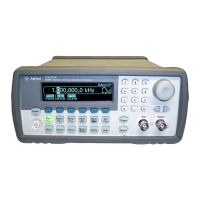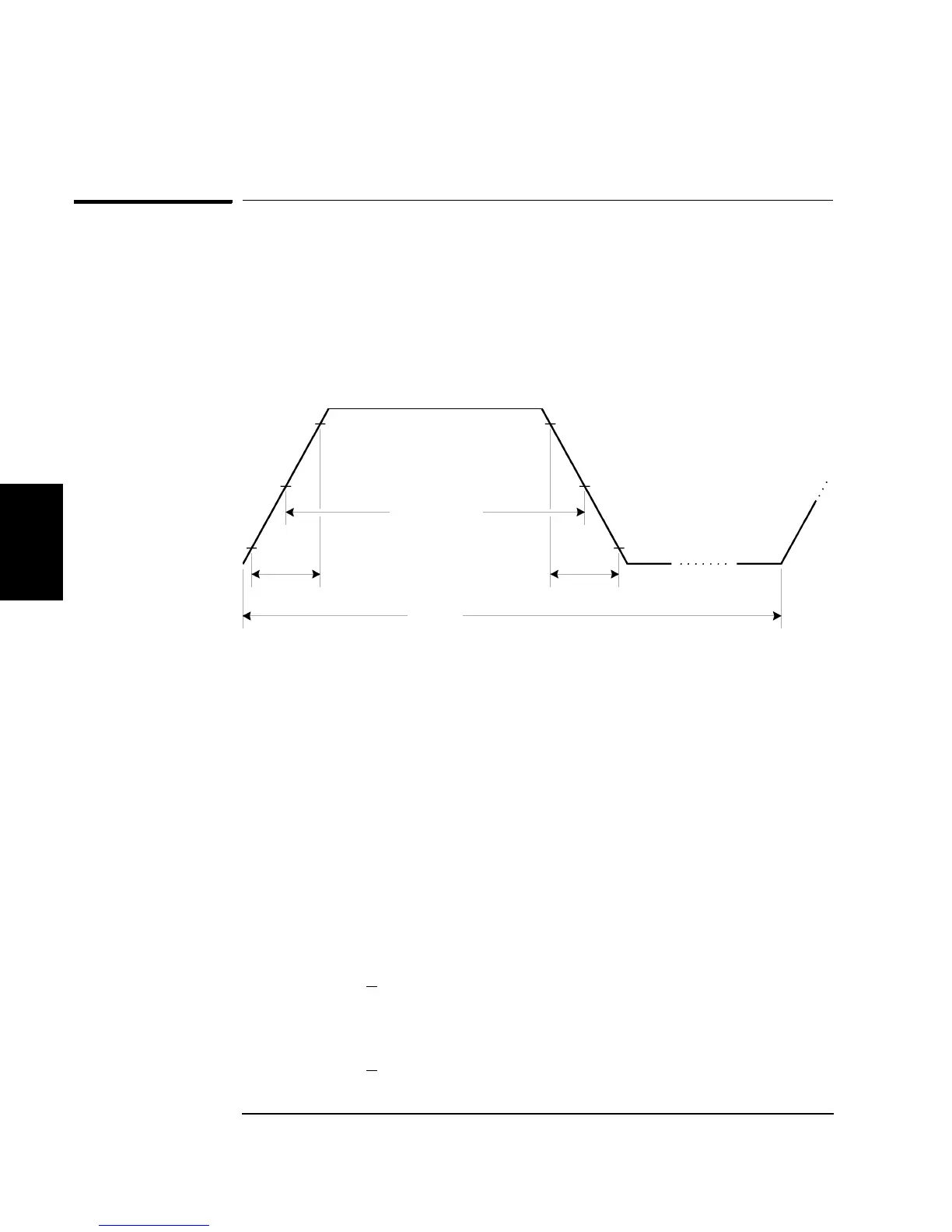192
Chapter 4 Remote Interface Reference
Pulse Configuration Commands
4
Pulse Configuration Commands
See also “Pulse Waveforms” starting on page 70 in chapter 3.
This section describes the low-level commands used to program the
function generator to output a pulse waveform. To select the pulse
function, use the FUNC PULS command (see page 179). Refer to the
diagram below for the command descriptions that follow.
PULSe:PERiod {<seconds>|MINimum|MAXimum}
PULSe:PERiod? [MINimum|MAXimum]
Set the period for pulses. Select a period from 200 ns to 2000 seconds.
The default is 1 ms. MIN = 200 ns. MAX = 2000 seconds. The PULS:PER?
query returns the period of the pulse waveform in seconds.
• The specified period must be greater than the sum of the pulse width
and the edge time. The function generator will adjust
the edge time
and the pulse width as needed to accommodate the specified
period.
From the remote interface, a “Settings conflict” error will be generated.
The edge time is minimized first, and then the width (or duty cycle) is
adjusted as shown below.
Period >
Pulse Width + (1.6 X Edge Time)
or in terms of pulse duty cycle:
Period >
(Period X Duty Cycle ÷ 100) + (1.6 X Edge Time)
Rise Time
Fall Time
10%
90%
0%
10%
90%
50%
Pulse Width
Period

